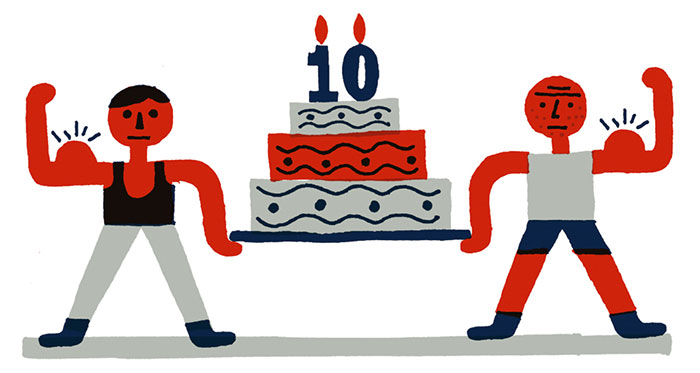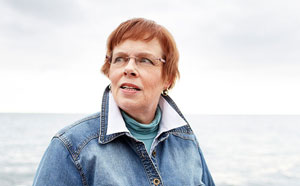
The Walrus is entering its tenth year. Volume 1, issue 1 was published in October 2003. The cover story, by Marci McDonald, asked whether Paul Martin, who would soon be prime minister, could do for the country what he had done for Canada Steamship Lines, the company that made him rich. In a column at the front of the magazine, founding editor David Berlin wrote that no one could remember where the name The Walrus came from. In the beginning, apparently, it was only a working title, but “working titles have a way of working themselves in under the skin. The Walrus did that, and very soon could not be worked out.” Berlin understood that if The Walrus seemed an unusual name for a magazine, in time it wouldn’t matter. “Several weeks ago,” he wrote, “one of our editors was at a book fair where an employee of Penguin Books asked him, ‘Why The Walrus? ’ To which he replied, ‘Why Penguin? ’”
We name our children before we know who they are. As they grow up, their names and personas become synonymous, and we wonder how we could have called them anything else. It’s much the same with objects. Most of us couldn’t tell you who John Holt and George Richard Renfrew were, but the business they created has made the name Holt Renfrew a hallmark of luxury ever since. Anyone who thought Apple was an odd name for a computer has long since realized that in the end it’s the object that gives meaning to the name, not the other way around. And so it is with magazines. The name Vanity Fair alludes to a nineteenth-century novel by William Makepeace Thackeray that most of the magazine’s readers have never read. For them, Vanity Fair means intelligent, stylish writing about popular culture. Few readers of Rolling Stone would know that its name is borrowed from a ’50s song by Muddy Waters. For them, Rolling Stone means the celebration of rock ’n’ roll. The Atlantic, now published in Washington, DC, owes its name to its geographic origins in post-revolutionary Boston, a historical footnote of little or no consequence to its modern readers. For them, The Atlantic means thoughtful writing about literature, politics, science, society, and the arts.
So yes, at the time The Walrus was a peculiar name for a magazine about Canada and its place in the world, but now, almost ten years and 100 issues later, it seems less so. If for most Canadians it still suggests a tusked marine mammal that inhabits the Arctic and is prized by Inuit for its meat, fat, skin, ivory, and bone, for other people—around 240,000 at last count—it also brings to mind this magazine. For them, as for the Indigenous people of the North, it is sustenance, albeit of a different kind. The Walrus nourishes their interest in matters Canadian as no other magazine has since the glory days of Saturday Night, and this, I dare say, makes reading it an act of patriotism, like reading a reputable daily newspaper. There are better magazines in the world—The New Yorker is more literate, The Spectator more erudite, The Economist more worldly, and I could go on—but none of them has as its raison d’être making you a better-informed citizen of Canada.
However, there is more to it than that. The fine print on the magazine’s masthead says that in addition to promoting debate on matters vital to Canadians, the Walrus Foundation has a mandate to support Canadian writers and artists. Besides Marci McDonald, the contributors in that first issue included Carol Off, Douglas Coupland, and Margaret Atwood. Shary Boyle, who will represent Canada at this year’s Venice Biennale, was among the illustrators. And the tradition continues. The issue you’re holding, for instance, contains stories by Mark Kingwell, Daniel Baird, Katherine Ashenburg, and Richard Poplak—all winners of National Magazine Awards. Novelist and short story writer Kathryn Kuitenbrouwer has been published in the British literary journal Granta. Poet Jeramy Dodds has been shortlisted for the Griffin Prize. The work of artist Niall McClelland has been exhibited alongside that of Ellsworth Kelly and Richard Serra.
In October, we’ll mark the magazine’s tenth anniversary with a special 100-page issue, but, as you can see from the cover of this one, we intend to celebrate all year long. And why not? Launching a magazine, like opening a restaurant, is manifestly risky. Most new magazines fail. This one hasn’t. And it won’t so long as enough readers, donors, and advertisers are at the table to assure us that its survival matters. So far, so good.
This appeared in the January/February 2013 issue.




